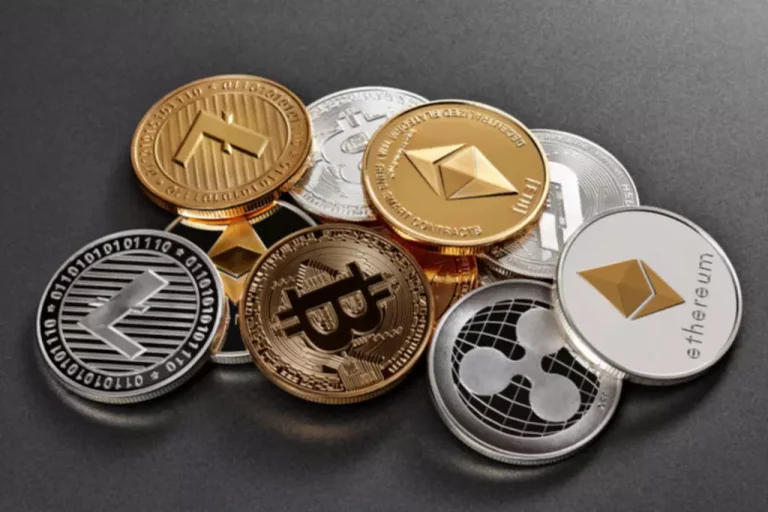Content
ICOs are the exchange of coins, profits or even currencies, STOs are https://www.xcritical.com/ the trade of securities. An original feature of STOs is that they’re not aimed exclusively at early-stage startups. Does this mean established companies seeking to file for an IPO might have better chances to raise money via an STO?

What Are the Blockchain Platforms to Develop STO and ICO?
The good news is that while all these acronyms might seem intimidating, they’re actually pretty easier to understand. This article will explain what each acronym means, when each type of funding model is used, what the pros and cons of each are, and how to get involved. Binance Smart Chain has emerged difference between sto and ico as a popular alternative for ICOs, primarily due to its high-speed transactions and lower fees than Ethereum.
What is STO (security token offering)?

ICOs are more like crowdfunding campaigns, while STOs are more like traditional securities offerings. With STOs, companies must adhere to the regulations set forth Cryptocurrency wallet by their jurisdiction, and investors have more legal protection. ICOs are frequently used by early-stage projects that are still in development or pre-launch phases. They are ideal for raising initial capital to fund the project’s growth and development. Investors in ICOs often receive utility tokens that grant access to future services or products.
- Just as investors who buy the shares of a company enjoy dividends, STO crypto investors also enjoy the benefits applicable to their investments.
- Investor protection and a rigorous verification process for all investors are just two of them.
- The token is often offered at a discounted rate during the ICO and is expected to increase in value as the project develops.
- STOs prioritize investor protection through robust disclosure requirements and transparency, unlike ICOs, which may lack the same level of oversight.
- My guess is that evolving regulations will eventually put fundraising primarily under an STO model, at least in most countries.
- Investors and traders engage in ICOs, hoping for an increase in the value of the tokens they purchase, while others buy tokens for practical use within the scope of a specific project.
ICO vs STO: What are the differences between Initial coin offering and Security Token Offering?
An ETO (equity token offering) is also a specific type of ICO, and in fact a specific type of STO, where the token offered is an equity token. Equity tokens are cryptocurrency tokens which represent a share in a company or venture. ICO projects are ranked based on the blockchain technology with which the project’s tokens were developed. The core is on the token blockchain and not on the blockchain technology on which the project platform itself operates. The Malta Stock Exchange and Binance are already thinking about joining forces to launch a trading platform for trading security tokens. Essentially, tokenization enables startups to raise money without going through an intermediary.

In contrast, an STO involves the issuance of security tokens backed by real assets or company equity, making it a regulated offering. Initial coin and securities token offerings are two of the most popular methods of obtaining capital in today’s decentralized financial ecosystem. Except for the changes in the underlying assets, they are comparable to initial public offerings (IPOs). While STO tokens are sold on authorized exchanges, ICO tokens are offered on specific trading platforms for digital currencies. After reading this article, we hope you understand the major difference between both.
When an exchange allows an IEO there’s a reputational risk to the exchange if the project turns out to be bad. As a result, the STO was introduced and it solves one of the main issues that ICOs have, which is the lack of any available compensation for investors if the project somehow dies or disappears. A Security Token Offering (STOs) is a new method for raising funds that came about in reaction to the beginning crackdown by the Security and Exchange Commission on fraudulent ICOs. Investors buy the tokens with the expectation that they will increase in value and can be sold at a profit later. Our technical experts offer a free consultation to help you plan your idea, requirements, and tokenomics before beginning development. In the blockchain-based crowdfunding landscape, leveraging tokenization to choose between a Security Token Offering (STO) or an Initial Coin Offering (ICO) has profound implications.
The regulation that applies to STOs increases the level of investor protection against scams. Besides, the STO tokens can be launched on a regulated exchange, which provides a stable and predictable market for tokens. But this ensures that the flow and accessibility of STO tokens to the market has drawbacks compared to ICO tokens due to this regulatory control. STOs, on the other hand, are strictly regulated, and its issuers need to adhere to the provisions of the securities laws. This kind of regulation gives STOs an added layer of safety and credibility to those who are reticent about investing in cryptocurrencies.
As real-time assets are used to create security tokens in during STO development, investors are given a high level of security while token issuers face less risk. In the first quarter of 2018 alone, companies raised more than $6 billion this way. However, by the end of 2018, the cryptocurrency market capitalization had dropped by $750 billion. This drastic fall drew the attention of regulatory bodies, leading to their claim that all tokens and cryptocurrencies should be considered as securities, hence, regulated under securities laws. STOs are subject to robust regulatory oversight, offering a structured framework that enhances investor protection. Regulatory compliance is crucial, ensuring that security tokens adhere to securities laws.
Whether you’re seeking capital or investment opportunities, staying informed and compliant will be paramount in this evolving blockchain ecosystem protocol. An ICO (initial coin offering), also known as a token sale, is any activity – public or private – where cryptocurrencies or cryptocurrency tokens are sold off. While you can participate in some ICOs with fiat currencies such as the Dollar or Euro, most ICOs allow you to purchase tokens in exchange for Bitcoin, Ethereum, or other cryptocurrencies. The bulk of investors in tokens profit from large levels of liquidity and low levels of control. The level of market transparency offered by ICO Security tokens is lower than that of regular ICOs. Although engaging with startups is obviously easier, intermediaries and monitoring are unlikely to be entirely eliminated by STOs.
But this also means that ICO investors are at a higher risk and could also lose all of their money to a venture that does not succeed. Here are some comparisons between ICO and STO that are perceived and utilized in the blockchain and broader financial markets. If you’re looking to determine which option is better suited for your investment or business goals, understanding the differences between ICOs and STOs is essential.
An overview of BTC, ETH, XAUT, and S&P500 charts, along with the current cryptocurrency market dynamics. With new IRS regulations coming into effect in 2025, experts are predicting an unprecedented wave of audits and investigations aimed at uncovering unreported crypto activity. The NFT marketplace OpenSea, a pioneer in the space for the past seven years, is expected to launch its native token in 2025. A significant portion of the tokens will likely be distributed through a retroactive airdrop—a common way to reward the community for their past activity and support. Fidelity Digital Assets analyst Chris Kuiper shares insights on how Bitcoin will navigate volatility, Ethereum will address scaling challenges, and stablecoins will adapt to evolving regulations. The content on The Coinomist is for informational purposes only and should not be interpreted as financial advice.
STO and ICO are both fundraising mechanisms in the cryptocurrency domain, but they cater to different needs and are governed by varying regulatory frameworks. In this blog post, we’ll delve into the distinctions between ICOs and STOs, exploring their characteristics, advantages, and drawbacks. Understanding these differences is crucial for entrepreneurs, investors, and blockchain enthusiasts to make informed decisions in the evolving crypto landscape.
The system would divide access rights among multiple trusted parties, with each holding a unique key. Transactions would require approval from several of these keyholders to proceed. In 2024, we saw a number of hot airdrops and token launches, from AI-powered projects to the rise of memecoins.


